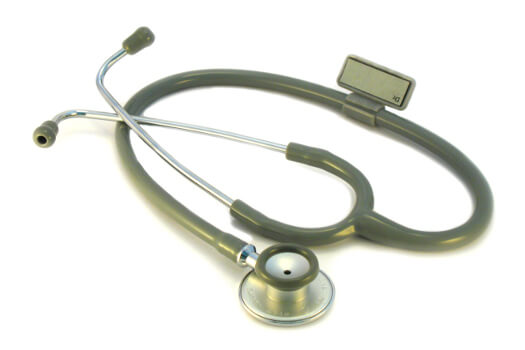
Empowered patients.
Seems everyone’s talking about this phrase lately. Heck, even CNN has a whole section devoted to the concept.
But what does it mean? And who are those empowered patients? Most importantly, what secrets do they know that you don’t? How can you use those secrets to improve your own pain management plan and quality of life?
What Does “Empowered Patient” Mean?
It might be easier to start with defining the opposite of “empowered patient” — what I’ll call the disenfranchised patient.
This is someone whose state of health and well-being have been completely handed over to the responsibility of others. She’s thoroughly dependent on what the doctor says. She doesn’t ask questions. She doesn’t understand her own condition or what her options are.
Like a kindergartener, she simply follows the instructions of the authority figure who tells her what to do — usually a doctor, sometimes a well-meaning friend or family member, or even a specific website.
Compare that patient to the empowered patient. Here’s someone who treats her medical care as a team task — and she’s the captain of that team. She listens to the advice she’s given but she makes her own decisions about her health care and pain management plan.
Most importantly, she’s a fully invested and active partner in her own well-being.
The Seven Secrets of the Empowered Chronic Pain Patient
What do these empowered patients have to teach the rest of us?
I’ve done a lot of research on the subject, spoken with many patients who fit that description, and come up with a list of six “secrets” that they understand completely — secrets that aren’t common knowledge, but that can turn anyone into a truly empowered patient.
1. Do Your Own Research Into Your Chronic Pain Condition
The empowered chronic pain patient knows that she’s just as capable of understanding her condition and keeping on top of recent developments — maybe even more so — as her medical team. After all, her doctors have lots of patients with many different conditions; the patient has one (or perhaps a few) conditions to keep track of. She doesn’t abdicate the responsibility for maintaining that information to her doctor.
However, we all know too well that there’s a real problem with much of the health information available on the web — much of it’s patently wrong, some of it’s even dangerous, and it’s really tough for the lay person to figure out which sources are trustworthy. How can you tell the difference between a reliable site and one that’s better ignored?
Start with the .gov and .edu sites. These government and university research sites are generally considered by most health care experts to be the most reliable. For the government sites, they’re also typically written at a level that’s easier to understand for the lay person, because the audience of those sites is generally the patient herself.
Once you have a basic understanding of the parameters of your condition, you can expand your knowledge by searching for other sites dedicated to your condition. An excellent resource is WebMD, which has several condition-specific centers on its site where other patients share tips, resources, and new information. (I’m a member of the Fibromyalgia Exchange, one of those centers, and I can personally attest that it’s a terrific group, providing support as well as information.)
Another tip: set up Google Alerts including your condition’s name to deliver news about your illness straight to your inbox. This is an excellent way to stay up to date with recent developments.
2. Demand — And Give — Respect to Your Pain Management Team Members
Especially for conditions like ME/CFS and fibromyalgia, which are plagued by a small but vocal minority of medical professionals who doubt the disease’s very existence, it can be difficult for chronic pain patients to foster solid, helpful relationships with the doctors they see regularly.
For many of us raised to accept a doctor’s words unquestioningly, it can be difficult to insist on being treated with respect.
The bottom line, though, is this: if your doctor doubts your illness exists, or thinks it’s “all in your head,” how can he or she treat you properly at all? You’re just wasting his or her time, as well as yours. Find another doctor, one who’s better equipped to treat your condition.
Insisting on respect doesn’t mean treating the physician poorly, however. Just as with all our relationships in this world, the best doctor/patient relationships are fostered on mutual respect.
You can read further tips on developing a better relationship with your treating physicians here.
3. Prepare for Visits to Your Doctor(s)
We’re all guilty of it at some point or another: mumbling our way through a doctor’s visit, then realizing when you get back in your car that you forgot to ask the doctor about eight important questions and tell her about two new symptoms.
The culprit here is our failure to prepare for each and every visit as if it were a crucial business meeting. You wouldn’t go into a meeting with your boss for your annual review unprepared, would you?
Similarly, you should take the time before each impending visit to plan exactly what you want to get out of that visit.
Specific suggestions:
-
Keep a list of questions. Start this written list as soon as the last visit is over, and add to it periodically. Before your visit, review that list and select the most important issues to discuss.
-
Bring a tape recorder or a friend. It’s all too easy to forget every single word that’s exchanged between you and your doctor when you’re focused on trying to participate in the conversation. Instead of delaying things and interrupting the flow of conversation with written notes, consider taking a tape recorder or a friend into your appointment. Turn on the recorder (ask permission first!) or tell the friend to take notes, then you can focus on communicating with your physician.
-
Bring a summarized version of your pain log. (See secret #5 for more information on this.) Being able to show your physician the ups and downs of your pain, along with any patterns you’ve been able to discern can greatly improve her ability to make the correct adjustments to your pain management plan.
-
Take printouts of research or new treatments you want to ask about. Doctors are only human, and it’s easy for them to get distracted or not pay enough attention (or just not understand) what we’re saying when we ask about new research or developments into our conditions. During your periodic research (see secret #1, above), collect printouts of those points you’d like to ask your doctor more about, especially if it concerns a new treatment protocol. If she doesn’t have time to review it fully during your visit, you can leave the printout with her and get back in touch later.
4. Kill The Doorknob Moment Dead
There’s one point that comes in almost every doctor’s visit when most doctors say the patient’s goals go way off track. It’s also the moment that’s responsible, to a large degree, for the backlog of patients in the waiting room. It’s so common that doctors even have their own name for it: the
doorknob moment.
You’ve experienced this yourself, undoubtedly: the visit’s almost over, the doctor’s given you marching orders, her hand is on the doorknob to open the door and leave, and you say “Oh, by the way, doctor, there’s this thing I wanted to ask you about …”
And almost invariably, that little thing that the patient almost forgot to ask? Is really the most important thing she could ask. It’s what’s been bugging her most. It may even be why she made a special appointment.
Keeping and bringing your list of questions to the visit will go a long way to killing this moment, but the empowered patient takes it a step further. She prioritizes her list and asks those questions right up front. This sets the tone and agenda for the visit, and gets the doctor’s mindframe where it needs to be (“OK, she’s concerned about a, b, and c, and a’s the most important thing for me to focus on right now…”).
Simply put, you’ll get better care by killing the doorknob moment dead.
5. Keep a Pain Log
Arguably the greatest tool in your arsenal against chronic pain, the pain log is simply any collection of data that you maintain on an ongoing basis about the key aspects of your condition. Empowered patients use the pain log to help their doctors pinpoint potential patters in their pain experience. (Wow, that was a lot of alliteration for one sentence.)
At its most basic, a pain log would simply track pain level and quality over time. For even more control over your treatment options, however, consider including notes on other aspects of your life that can impact your pain: sleep, diet, exercise, mood, stress level, etc.
The pain log can be “digital” or “analog.” I formerly used a moleskine, but have moved to a text document on my computer, perpetualy docked to my desktop. When I’m ready for a doctor’s visit, I simply pull it up and print out the changes since the last visit.
There’s also a new site called Relief InSite that appears to be a web-based version of the pain log. It also allows your doctor to log in and view your notes, which has a whole host of potential benefits. (NB:
If that sounds like something you’d be interested in, please give it a try and then drop me a note here or on Twitter to let me know what you think so I can write about this site in more detail later, OK?)
Whatever format you choose, the two main components of a successful pain log are:
- Keeping it consistently over a period of time; and
- Being completely, brutally honest in it.
6. Trust Your Instincts
Finally, the single most important secret that an empowered patient knows is to pay attention to that little nagging voice inside. Accounts of women who insisted something was wrong, only to find out from shocked ER staff later that they were having heart attacks, are all too common, unfortunately.
As long as you haven’t been diagnosed as a hypochondriac, your intuition can be a powerful ally in getting the right diagnosis. Somehow, our bodies know — and tell us, through often-subtle physiological clues — when something’s seriously wrong.
It’s important not to get carried away, of course — headaches are usually not indicative of brain tumors, but stressing about it too much can wreak serious havoc on your health — but if you really feel something’s wrong, don’t settle for a dismissal. Get second opinions, insist on tests, and above all, try to stay calm.
Finally, if you feel you’re not able to be your own advocate, then find an extroverted friend or family member who’s willing to be your advocate during visits that are likely to be contentious.
Empowerment Is Within Your Control
By learning and putting into practice these six secrets of the empowered chronic pain patient, you can improve both your quality of care, as well as your quality of life.
Above all, remind yourself — out loud, if you need to, and often — that you are priceless, and therefore worthy of the absolute best in medical care.
Put forth the effort to become your own team leader. I guarantee you the results are worthwhile.
Are you an empowered patient? What secrets or tips would you share with other chronic pain patients to get the most out of their health care programs?








